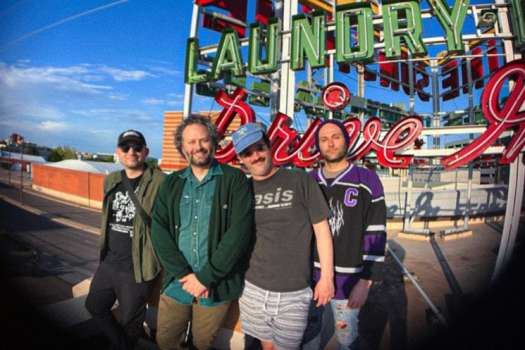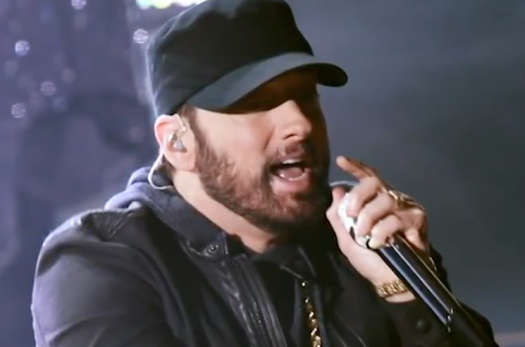It's fair to say that Disney+'s various Star Wars shows have been a mixed bag. While the fan base remains rabid, the shows have not all been met with acclaim — some are critically loved (such as Andor), and others not so much (The Book of Boba Fett or Obi-Wan Kenobi).
What the best of them have in common is they aren't trying too hard to be Star Wars. Where The Mandalorian seems intent on reminding audiences every episode that it's Star Wars — with references, cameos and callbacks to other entries in the franchise — a show like Andor tells a good story set in the same cinematic universe. Critics were given the first two episodes of Ahsoka and, so far, thankfully, the new series leans mostly in the latter direction.
Picking up five to six years after the fall of the Empire and 10 years after the end of Star Wars Rebels, we catch up with Ahsoka Tano (Rosario Dawson) on the hunt for a map to the hidden location of Grand Admiral Thrawn (Lars Mikkelsen). Thrawn, the villain from Rebels, disappeared at the end of the war, and we find out that everyone but Ahsoka (and the bad guys) believes him to be dead.
Once Ahsoka finds the map, she visits Sabine Wren (Natasha Liu Bordizzo) for help deciphering it. Once Sabine accomplishes this, the map is, of course, stolen by the baddies, including not only Morgan Elspeth (Diana Lee Inosanto, reprising her role from The Mandalorian) but also a new lightsaber-wielding master and apprentice played by Ray Stevenson and Ivanna Sakhno, respectively.
While the show does make a lot of references to past Star Wars entries, a key difference is intent and execution. Ahsoka is effectively a sequel series to Rebels, so when callbacks are made, they come up organically; Easter eggs aren't constantly shoved in front of the camera and winking at its audience.
The show's writer, Dave Filoni, injects his script with a lot of care and thoughtfulness — unsurprisingly, as Ahsoka follows many characters he created and is a logical extension of the stories he was telling with Star Wars Rebels (and, to a lesser extent, Clone Wars).
Filoni isn't afraid to mix things up in exciting ways, either. It is revealed early on that Ahsoka took on Sabine as a Padawan learner, but that relationship failed for more compelling reasons than one might assume going in. It's further revealed that Sabine isn't particularly attuned to the Force, reinforcing that being strong with the Force (or a lightsaber) isn't the most important thing about being a Jedi.
Dawson's Ahsoka in this series is a little wiser than in previous appearances but just as stubborn, and her back-and-forth with both Mary Elizabeth Winstead's Hera Syndulla and Natasha Liu Bordizzo's Sabine feel natural and lived in; there is never a question that these characters have known and fought together for more than a decade. Dawson also has the character's physicality down to a fine art, and treats viewers to a truly exceptional lightsaber fight against two opponents at a critical moment.
Fans of Rebels can rest easy knowing the characters of Hera and Sabine are also in good hands. Winstead slips into the role of the veteran rebellion leader turned new republic admiral with distinct ease, acting as both a friend to Ahsoka and a mothering figure to Sabine. More importantly, her relationship with Chopper (the best droid in the franchise) is lighthearted, loving and fun.
Bordizzo also does exceptional work as Sabine. In an early scene in the first episode, she has to convey a series of emotions on a somewhat stoic face and carries it off beautifully. She also nails the resentment, anger and frustration from her strained relationship with Ahsoka. There is a lot of complex emotion going on with Sabine, and Bordizzo handles it with a graceful and understated performance.
The MVP of the first two episodes, though, is the late Ray Stevenson. His character, a former Padawan who disappeared into the frontiers of space during the extermination of the Jedi, is perhaps the most interesting new character Star Wars has introduced in their streaming offerings. He's no longer a Jedi, but also not a Sith. He follows a code but is currently working for the series' villains. In many ways, he's the mirror of Star Wars Rebels character Kanan Jarrus. Rather than aligning himself with the dark side, he exists in a fascinating grey area that we haven't seen a Force-using character inhabit before, and Stevenson understands this. His dialogue is excellent, and he has some of the best line deliveries in the series so far.
There is a lot to like in Ahsoka. The acting is on point, and the production design is excellent — this looks and feels like Star Wars, and the recreation of formerly animated locations is fantastic. The first two episodes of this series set up a story that will be compelling to long-time fans and new viewers alike. It's a reminder that Star Wars, in the right hands, can be great.
(Disney)What the best of them have in common is they aren't trying too hard to be Star Wars. Where The Mandalorian seems intent on reminding audiences every episode that it's Star Wars — with references, cameos and callbacks to other entries in the franchise — a show like Andor tells a good story set in the same cinematic universe. Critics were given the first two episodes of Ahsoka and, so far, thankfully, the new series leans mostly in the latter direction.
Picking up five to six years after the fall of the Empire and 10 years after the end of Star Wars Rebels, we catch up with Ahsoka Tano (Rosario Dawson) on the hunt for a map to the hidden location of Grand Admiral Thrawn (Lars Mikkelsen). Thrawn, the villain from Rebels, disappeared at the end of the war, and we find out that everyone but Ahsoka (and the bad guys) believes him to be dead.
Once Ahsoka finds the map, she visits Sabine Wren (Natasha Liu Bordizzo) for help deciphering it. Once Sabine accomplishes this, the map is, of course, stolen by the baddies, including not only Morgan Elspeth (Diana Lee Inosanto, reprising her role from The Mandalorian) but also a new lightsaber-wielding master and apprentice played by Ray Stevenson and Ivanna Sakhno, respectively.
While the show does make a lot of references to past Star Wars entries, a key difference is intent and execution. Ahsoka is effectively a sequel series to Rebels, so when callbacks are made, they come up organically; Easter eggs aren't constantly shoved in front of the camera and winking at its audience.
The show's writer, Dave Filoni, injects his script with a lot of care and thoughtfulness — unsurprisingly, as Ahsoka follows many characters he created and is a logical extension of the stories he was telling with Star Wars Rebels (and, to a lesser extent, Clone Wars).
Filoni isn't afraid to mix things up in exciting ways, either. It is revealed early on that Ahsoka took on Sabine as a Padawan learner, but that relationship failed for more compelling reasons than one might assume going in. It's further revealed that Sabine isn't particularly attuned to the Force, reinforcing that being strong with the Force (or a lightsaber) isn't the most important thing about being a Jedi.
Dawson's Ahsoka in this series is a little wiser than in previous appearances but just as stubborn, and her back-and-forth with both Mary Elizabeth Winstead's Hera Syndulla and Natasha Liu Bordizzo's Sabine feel natural and lived in; there is never a question that these characters have known and fought together for more than a decade. Dawson also has the character's physicality down to a fine art, and treats viewers to a truly exceptional lightsaber fight against two opponents at a critical moment.
Fans of Rebels can rest easy knowing the characters of Hera and Sabine are also in good hands. Winstead slips into the role of the veteran rebellion leader turned new republic admiral with distinct ease, acting as both a friend to Ahsoka and a mothering figure to Sabine. More importantly, her relationship with Chopper (the best droid in the franchise) is lighthearted, loving and fun.
Bordizzo also does exceptional work as Sabine. In an early scene in the first episode, she has to convey a series of emotions on a somewhat stoic face and carries it off beautifully. She also nails the resentment, anger and frustration from her strained relationship with Ahsoka. There is a lot of complex emotion going on with Sabine, and Bordizzo handles it with a graceful and understated performance.
The MVP of the first two episodes, though, is the late Ray Stevenson. His character, a former Padawan who disappeared into the frontiers of space during the extermination of the Jedi, is perhaps the most interesting new character Star Wars has introduced in their streaming offerings. He's no longer a Jedi, but also not a Sith. He follows a code but is currently working for the series' villains. In many ways, he's the mirror of Star Wars Rebels character Kanan Jarrus. Rather than aligning himself with the dark side, he exists in a fascinating grey area that we haven't seen a Force-using character inhabit before, and Stevenson understands this. His dialogue is excellent, and he has some of the best line deliveries in the series so far.
There is a lot to like in Ahsoka. The acting is on point, and the production design is excellent — this looks and feels like Star Wars, and the recreation of formerly animated locations is fantastic. The first two episodes of this series set up a story that will be compelling to long-time fans and new viewers alike. It's a reminder that Star Wars, in the right hands, can be great.




